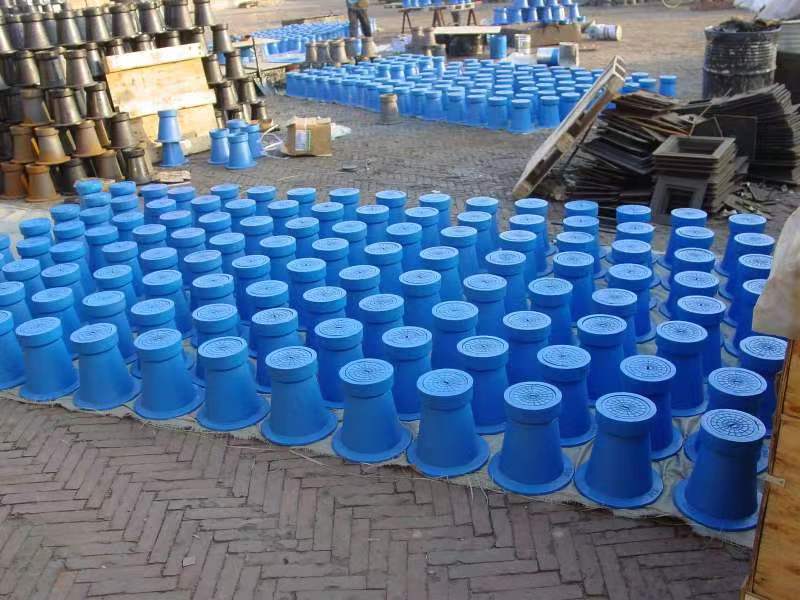flexible safety bollards
The Importance of Flexible Safety Bollards in Modern Urban Design
In our ever-evolving urban landscapes, safety and functionality often go hand in hand. As cities expand and traffic increases, the demand for effective safety measures becomes more pronounced. One of the key solutions that has emerged in recent years is the flexible safety bollard. Designed to enhance safety for both vehicles and pedestrians, these structures play a crucial role in urban planning and infrastructure.
What are Flexible Safety Bollards?
Flexible safety bollards are typically made from resilient materials like plastic or rubber, which allow them to withstand impacts from vehicles without sustaining significant damage. Unlike traditional metal bollards that can pose risks during collisions, these flexible alternatives bend upon impact and return to their original shape, minimizing the risk of injury and damage. This characteristic makes them particularly suitable for areas where vehicular traffic frequently interacts with pedestrian zones.
Benefits of Flexible Safety Bollards
1. Enhanced Safety The primary function of safety bollards is to protect pedestrians from errant vehicles. Flexible safety bollards act as a barrier, significantly reducing the likelihood of severe accidents in crowded areas, such as shopping districts, parks, and school zones. Their flexibility mitigates injury risk and ensures that the surrounding environment remains intact.
2. Cost-Effective Solutions Traditional bollards can incur high maintenance costs due to the potential for damage during collisions. Fortunately, flexible safety bollards require less maintenance and replacement, making them a cost-effective choice for municipalities and businesses alike. Their durability and resilience lead to longer life spans and less frequent need for replacements.
3. Aesthetic Versatility Modern flexible safety bollards come in various colors, shapes, and sizes, making it easy to integrate them into different urban aesthetics. Whether enhancing a contemporary cityscape or maintaining a historic district's charm, these bollards can be customized to suit the environment, proving that safety measures can also enhance the visual appeal of public spaces.
flexible safety bollards

4. Adaptability to Different Environments Because of their lightweight and portable nature, flexible bollards are adaptable to various environments. They can be easily installed in temporary situations, such as outdoor events or construction zones, providing on-the-spot solutions to emerging safety concerns. This flexibility makes them ideal for cities that frequently host festivals, parades, or public events.
5. Wireless and Interactive Features Innovative designs for flexible safety bollards have introduced wireless technology, allowing for features like solar-powered lighting and interactive displays. These advancements improve visibility at night, ensuring pedestrian safety while also providing valuable information and guidance to users navigating busy urban areas.
Challenges and Considerations
While flexible safety bollards offer numerous advantages, some challenges must be addressed. For instance, ensuring that the bollards are sufficiently visible to all road users is essential. Additionally, cities must consider the right placement and spacing of these bollards to optimize safety without obstructing traffic flow.
Furthermore, public awareness about the purpose of these safety measures is critical. Educating pedestrians and drivers on the importance of bollards can help foster a culture of safety in urban environments.
Conclusion
As urban spaces continue to evolve, safety will remain a primary concern. Flexible safety bollards are a prime example of innovation meeting necessity in modern urban design. By enhancing safety, reducing maintenance costs, and complementing various urban aesthetics, they represent a forward-thinking approach to protecting pedestrians and improving city environments. As cities worldwide incorporate these vital structures into their infrastructure, the vision for safer and more navigable public spaces becomes a reality, paving the way for sustainable urban living in the future.
-
The Essential Component for Safe Urban InfrastructureNewsMay.14,2025
-
The Backbone of Urban InfrastructureNewsMay.14,2025
-
Practical and Stylish Solutions for Your Drainage NeedsNewsMay.14,2025
-
Lamphole Frame and Cover: Essential for Urban InfrastructureNewsMay.14,2025
-
A Seamless and Aesthetic SolutionNewsMay.14,2025
-
A Must-Have for Safety and DurabilityNewsMay.14,2025
-
Pipe Repair Clamps: Your Ultimate Solution for Efficient RepairsNewsMay.09,2025
